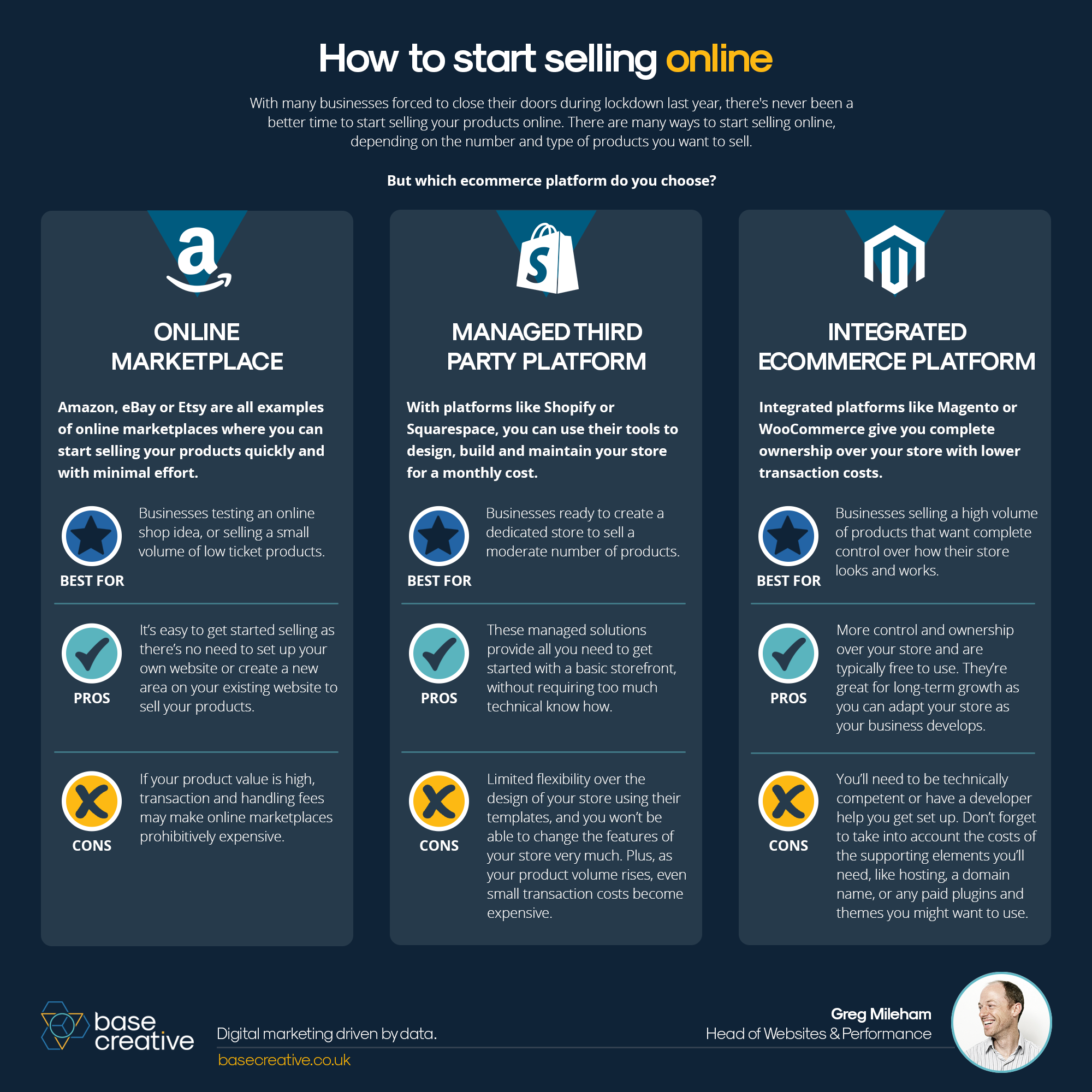E-commerce Unleashed: The Complete Guide to Its Benefits for Direct-to-Consumer (D2C) Sellers
E-commerce has transformed how brands reach and engage consumers. For Direct-to-Consumer (D2C) businesses, it offers an unprecedented opportunity to control the entire customer journey, from product discovery to post-purchase support. This guide explores the comprehensive benefits that e-commerce delivers to D2C sellers and actionable strategies to maximize these advantages.
- By
- 4129 views
- 0 reply
TABLE OF CONTENTS
"I Knew My Store Could Do Better...
But I Didn't Know How"
That's what one of our clients, Jessica, told us. She was running a small mug store on WooCommerce—sales were okay, but stuck.
Until she discovered personalization.
Until she discovered Cmsmart.
Fast-forward 30 days:
- ✅ Her store was redesigned with AI product options
- ✅ Customers could design their own mugs with 3D preview
- ✅ AOV jumped by 42% — and she finally felt in control
Want to learn how she did it (and how you can too)?
🎓 Join our FREE 30-Day Email Course:
"Personalize, Launch & Scale – The Smart Ecommerce Way"
You'll get:
- ✔ 1 lesson a day, straight to your inbox
- ✔ Real store examples, demos & playbooks
- ✔ No tech jargon. Just strategy that works.
Join thousands of store owners learning how to scale smarter.
🎉 You're In! Thank You!
We've received your information and you're now part of our smart ecommerce journey.
Please check your inbox – your first email from the 30-Day Course is on its way!
📩 Didn't see it? Check your spam or promotions tab and mark us as safe.
We're excited to help you personalize, launch, and scale your store – the smart way.
TABLE OF CONTENTS
Related Post
Did you know that eCommerce sales are projected to reach a staggering $8 trillion by 2027? In a world where high transaction fees and limited flexibility can cripple potential...
Imagine doubling your conversion rates simply by understanding and implementing the latest trends in eCommerce - sounds exciting, right? In a 2022 report, it was highlighted that the global...
Introduction: The Power of Custom Stickers for SMEs In today’s dynamic ecommerce landscape, custom stickers have emerged as a powerful tool for small and medium-sized enterprises (SMEs) to stand out,...
Other Usefull Contents
You can see many success stories from our customers, and you may be one of them in the future












Introduction: Why E-commerce is a Game-Changer for D2C Sellers
E-commerce has redefined the landscape for Direct-to-Consumer (D2C) brands, providing a powerful avenue to engage customers and build brand loyalty without relying on intermediaries. Unlike traditional retail models, D2C e-commerce allows businesses to interact directly with consumers, gaining valuable insights into their preferences, behaviors, and needs.
By controlling the entire customer journey—from product discovery to post-purchase engagement—D2C brands can deliver personalized experiences, implement agile marketing strategies, and scale operations more efficiently. This approach fosters deeper customer relationships and drives long-term growth.
For example, a D2C T-shirt brand can use e-commerce platforms to test new designs quickly, gather feedback directly from customers, and adapt its offerings in real-time. The result? Faster innovation, stronger customer connections, and increased profitability.
Benefits of E-commerce for Direct-to-Consumer Brands
Direct-to-Consumer (D2C) brands reap substantial benefits from e-commerce, enabling them to control customer relationships and scale rapidly. Key advantages include:
Greater Market Reach: D2C sellers can directly access consumers worldwide, expanding their customer base beyond geographical constraints.
Higher Margins: By cutting out intermediaries, brands retain more revenue and can reinvest in marketing and product development.
Control Over Customer Experience: From personalized recommendations to exclusive promotions, D2C brands tailor every touchpoint to build loyalty.
Data-Driven Insights and Personalization: Using analytics tools, brands can track customer behavior, refine marketing strategies, and deliver relevant content.
Scalability and Flexibility: E-commerce platforms like WooCommerce and Shopify allow rapid scaling to meet demand.
A real-world example is a D2C skincare brand that launched a limited edition product via e-commerce, leveraging email marketing and social media to drive demand. The result? A sold-out launch and a 35% increase in repeat purchases.
Explore more:
Cmsmart Web to Print Solutions
Cmsmart T-shirt Design Demo
Cmsmart Marketplace Solutions
Cmsmart YouTube: E-commerce Product Customization
Forbes: The Rise of D2C
Key Advantages of E-commerce in Today’s World for D2C Brands
E-commerce is not just a trend—it’s a transformative force reshaping how D2C brands operate in a digital-first world. The following advantages demonstrate why e-commerce is a must for modern businesses:
Pandemic Resilience and Digital Transformation: During the COVID-19 pandemic, e-commerce became the lifeline for many businesses. According to McKinsey, digital adoption accelerated by five years in just a few months. D2C brands leveraging e-commerce platforms were able to continue operations, reach customers, and maintain revenue streams amidst physical restrictions.
Integration with Digital Marketing Channels: E-commerce seamlessly integrates with digital advertising, email marketing, and social media campaigns. This convergence enables brands to create omnichannel experiences that engage customers at every touchpoint. Tools like Google Ads, Facebook Ads, and Mailchimp provide advanced targeting and automation for D2C marketers.
Global Reach with Localized Strategies: D2C brands can leverage e-commerce to scale globally while offering localized experiences, from currency and payment options to regional promotions.
Agility and Innovation: E-commerce platforms enable brands to test new products, gather real-time feedback, and iterate faster than traditional retail models.
For an in-depth look at D2C growth, explore related resources:
Cmsmart Web to Print Solutions, T-shirt Design Demo, Community SEO Tutorials, and E-commerce Customization Demo
Opportunities E-commerce Offers to D2C Brands
E-commerce opens up unprecedented opportunities for Direct-to-Consumer (D2C) brands to innovate and expand their reach. Some of these opportunities include:
Social Commerce and Influencer Marketing: By leveraging platforms like Instagram and TikTok, D2C brands can collaborate with influencers to reach niche audiences and build trust through authentic content. For instance, a D2C beauty brand partnering with a popular influencer could generate a 25% increase in engagement and a 15% boost in sales.
Personalized Customer Journeys: Advanced e-commerce platforms enable personalized shopping experiences, with recommendations, dynamic pricing, and loyalty programs that cater to individual customer preferences.
Subscription Models: D2C brands can implement subscription-based services for recurring purchases, creating stable revenue streams and increasing customer retention.
Innovative Payment and Delivery Options: Offering multiple payment gateways and flexible delivery options enhances the customer experience and captures more sales.
Practical Strategies for D2C Brands to Maximize E-commerce Benefits
To unlock the full potential of e-commerce, D2C brands should implement practical strategies tailored to their business goals. Here are some key actions to consider:
Invest in Data-Driven Decision Making: Leverage tools like Google Analytics, Shopify analytics, and CRM systems to gather insights into customer behavior, product performance, and conversion rates.
Optimize for Mobile Commerce: Ensure websites are fully responsive, with fast load times and seamless checkout experiences to cater to mobile shoppers.
Enhance Product Discovery and Personalization: Implement AI-driven recommendation engines to deliver relevant products and create a personalized shopping experience.
Build Strong Customer Communities: Use social media groups, forums, and interactive content to foster loyalty and engagement.
Implement Sustainable Practices: Consumers increasingly value eco-friendly brands. Highlight sustainability efforts and use certifications to enhance brand credibility.
Test and Iterate: Regularly A/B test landing pages, emails, and promotions to identify the most effective strategies.
Real-World Success Stories: How D2C Brands Thrive with E-commerce
Real-life examples illustrate how D2C brands are leveraging e-commerce to achieve remarkable growth and consumer engagement.
For further insights, check out Cmsmart Web to Print Solutions and Cmsmart’s community e-commerce strategies to see how your brand can leverage these success models.
External Resources for Further Exploration
To deepen your understanding of e-commerce strategies and stay ahead in the D2C space, consider exploring these valuable resources:
Shopify Plus: Advanced D2C Strategies
BigCommerce: D2C Growth Insights
Cmsmart Web to Print Solutions for personalized product customization
Cmsmart Community E-commerce Strategies for collaborative insights and expert guidance
Printcart: Web to Print API & Order Management
WooCommerce: D2C Store Customization
Klaviyo: Email and SMS Marketing Automation
Yotpo: Customer Reviews and Loyalty Programs
Zendesk: Scalable Customer Support Solutions
Google Analytics: Data-Driven Insights
Conclusion: Elevate Your Brand with E-commerce
E-commerce is not just a sales channel; it is a transformative strategy that enables D2C brands to control their narrative, understand their customers, and drive sustainable growth. With its scalability, agility, and potential for data-driven insights, e-commerce offers D2C businesses the opportunity to thrive in competitive markets.
Key takeaways:
Invest in tools and platforms that align with your D2C strategy, like Cmsmart Web to Print Solutions and Printcart's Web to Print API.
Leverage data analytics, customer feedback, and digital marketing to refine your offerings and enhance the customer experience.
Foster community engagement through social commerce, influencer partnerships, and personalized content.
Would you like me to proceed with the Call to Action section?
Accelerate Your D2C Growth Today
Ready to unlock the full potential of your Direct-to-Consumer brand? Take the next step with comprehensive solutions designed to help you scale, personalize, and succeed in the digital marketplace:
Visit Cmsmart Web to Print Solutions for advanced customization tools.
Discover Printcart’s Web to Print API & Order Management to streamline your processes.
Explore Cmsmart T-shirt Design Demo for real-world e-commerce success.
Join the Cmsmart Community for insights and expert discussions.
Watch Cmsmart YouTube for tutorials and success stories.